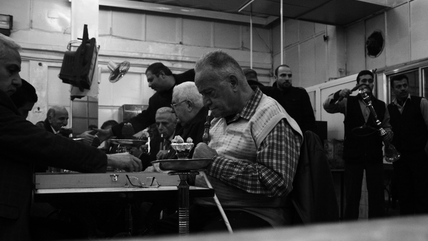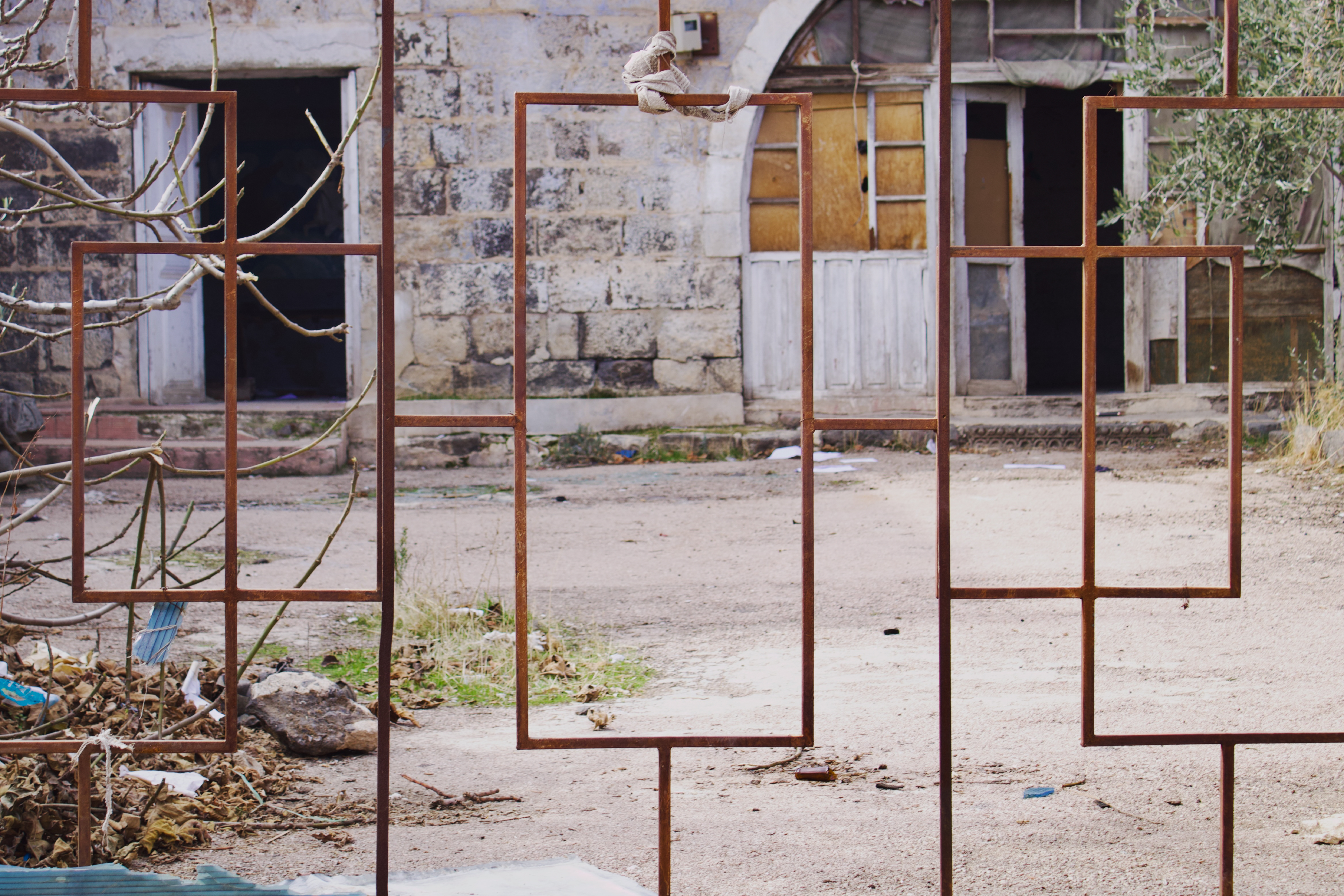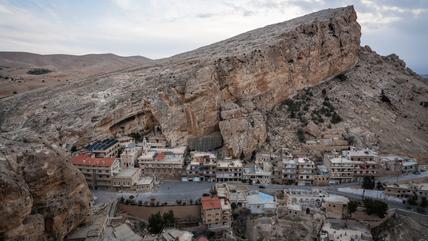Dictatorship, dispossession and a missing mosaic

Today, almost ten months after the fall of Assad's regime, the word reconstruction echoes across Syria. As the country begins to rise from its ruins, I am left wondering what it means to return to a place that was occupied by foreign powers for so long.
How can we reconstruct not only buildings, but also memories? In my family, this question is linked to one particular house.
That house is our family home in the town of Shahba in southern Syria's Suwayda province. To us, it has always been more than just a building. Five generations have passed through it, and each remembers it differently: as a home, an excavation site, a school, a military post, or a symbol of resilience. It is not only a family dwelling but a living record of Syria's transformations.
Its basalt walls remember everything: the hands that built it, the boots that stormed it, the quiet dignity of a family watching their history taken piece by piece.
These walls were once warm and porous; now they are suffocated under thick slabs of concrete roofing, poured during the French mandate in a style alien to the region.

To stay, to leave, to return
As many refugees return to Syria, queues are forming outside passport offices as people try to leave. Four personal stories reflect the hopes, fears and unresolved questions of a country in transition.
Slogans glorifying Hafez al-Assad and his son Bashar are scrawled across both interior and exterior walls, etched like scars into the building's surface. The walls are lined by military cots, scattered uniforms and rusted gear—ghosts of the soldiers once stationed there.
And yet, after I visited the house in March 2025, following ten years of living in exile, it was clear to me that the house is so much more than just a site of oppression. As a child, I would gaze at it from our balcony across the street, dreaming of the day I could step inside and play.
It has a wide front courtyard where two olive trees stand facing each other as if in silent conversation. Beside them, a tall cypress tree watches over the neighbourhood. A grand stone arch with two thick doors leads to five spacious rooms. Sunlight spills generously into every corner. The air carries the sounds of birds, roosters and chickens from nearby homes. It was, and in many ways is, a house that breathes.
Founded on Roman ruins
Our house was built in the late 19th century by my great-grandfather. Shahba is a city built from basalt that sits on a volcanic plateau framed by dormant black hills. The stone is strong and enduring, but difficult to work with. For that reason, it used to be common for families to incorporate stones from Roman ruins into their homes.
My great-grandfather did the same: he built the family house on the remains of a Roman dwelling. These reused stones, though practical, carried the legacy of Roman occupation, just like the city itself. Once renamed Philippopolis under Roman Emperor Philip the Arab, Shahba is still known for its ruins and its four monumental gates.
We lost our house when French colonial authorities arrived in Shahba during the Mandate period, which lasted from 1923 to 1946. They seized it to facilitate an archaeological excavation; it served as a collection site for artefacts. My great-grandfather had no choice but to surrender it.
He went on to construct a modest house directly across the street. Originally just two rooms, this new house was gradually expanded over the decades. My grandfather, father and uncles later built our houses on that same plot of land. It's where I grew up, with the house we had lost always in view, just a few steps away.
My grandmother Zakïa Awad still remembers the time of the French occupation: "I was five years old when I saw French soldiers accompanied by archaeologists digging inside the house as if searching for something hidden. After days of excavation, I watched them unearth large mosaic panels, brilliantly colored and adorned with tiny stones. They placed them in large transport carts and took them, I don't know where."

Years later, my grandmother's memory would find confirmation in the records of a French archaeological mission: the archaeologist Ernest Will published an account in the Bulletin de Correspondance Hellénique in 1953, describing the discovery of a Roman mosaic titled "The Glorification of Earth" in a private residence referred to as "Maison Aoua" (house of Aoua), likely a French transcription of our family name "Awad".
The mosaic was one of four panels excavated from the house during two separate missions. Today, two of the works are in the National Museum in Suwayda, while "The Glorification of the Earth" and another panel are on display in the National Museum in Damascus. Despite its exceptional artistic and historical value, the French report makes no mention of the house it came from, nor the family forced out to make way for its extraction. The artefact survived and travelled, the house was left behind, but not returned to us.
What colonialism didn't remove with carts and shovels, it repurposed. When the French left, the house was placed under municipal ownership. My grandfather Awad Awad tried, unsuccessfully, to reclaim it. The refusal to return the house was not an isolated act of injustice. During that era, after the French departure, the fate of most properties seized by the French was determined by powerful families who had maintained their influence by aligning themselves with the colonial authorities.
An influential family that had cooperated with the colonial authorities took over the administration of Shahba. Rather than restore the house to its rightful owners, the family turned it into a primary school. In an ironic twist of fate, my uncles and aunts would later attend that school and were taught inside the very walls their grandfather had once built for them as a home.
A childhood in the shadow of a military base
The period following the end of the French mandate was marked by significant instability, power struggles and successive changes of government. With the Ba'ath Party coup in 1970 and the consolidation of Hafez al-Assad's rule, the regime began using architecture as a means of domination. Urban space became a site of surveillance and control. Public squares and streets became a stage for the regime. Cultural institutions served the purpose of glorifying Assad.
During Hafez al-Assad's rule, the neighbourhood school, our house, was converted into a military training and recruitment base. Soldiers and officers from across Syria were stationed there, just across the street from my family's small house.

Throughout my childhood and adolescence, the sounds and images of militarised life shaped our reality: the bark of commands, soldiers drilling, gunfire. Sometimes, the regime's cruelty spilt into plain sight. I remember seeing a soldier punished for disobedience one winter morning—he was forced to stand naked in the freezing cold. This proximity to the military base changed how we lived. It shaped how we moved, how we spoke and even how we dressed.
Reclaiming a house, reimagining a society
The house remained a military post until 8 December 2024. With the collapse of the Assad Regime, local opposition forces in Shahba reclaimed the site. My uncle, Muhammad Awad, remembers that moment: "That day was filled with tension and anticipation as Assad's rule neared its end. I received a phone call from a member of an armed opposition group, telling me that Difa' al-Sha'bi (the name of the military post) had been reclaimed from the regime and that I should come immediately to take possession of it. The local community still remembered that this house belonged to our family."
We didn't have any legal documents or a court decision, however, proving that the house was ours. We knew we had no official claim. Nevertheless, we cleaned the house, we opened its doors and began to dream. Together, we envisioned a space in which not only the walls of the building, but the social fractures surrounding it, could begin to heal.

Fear lingers in an ancient community
In the predominantly Christian town of Maaloula, residents hold differing views on al-Sharaa and the safety of their community in the new Syria. For many, memories of the 2013 Nusra Front attack remain—and mistrust runs deep.
Today, reconstruction is not just about restoring physical walls; it is about reshaping the structures of power that have defined them for so long. Since the war has torn the country's physical and communal fabric apart, our home should offer a rare space to rethink society. A space to reimagine civic models for a participatory, inclusive Syrian future.
In this vein, our house has taken on a new life. My family, alongside members of the community, began transforming it from a site of repression into one of hope. It is now being used by a range of activists and the Social Commission for National Action, a grassroots, non-partisan group working toward a just and inclusive Syria. The house is slowly being renovated to host public activities, film screenings, workshops, discussions, and cultural events, despite the ongoing struggle to secure financial support.
Yet even as it serves this new role, the building remains legally vulnerable. Because it is still registered as state property, the government—whoever holds power—could reclaim it at any moment. The threat of dispossession lingers, reminding us that true restitution can't just be symbolic, but must be legally binding.
For us, the most urgent questions remain: how will the new government engage with these spaces? Will they be protected, shared and sustained by the people who reclaimed them, or once again absorbed by the logic of control? And how can local communities be empowered, not just to restore, but to truly own what was once taken from them long ago?
This text will also appear shortly in a joint edition of Qantara and Kulturaustausch magazine. Find more stories, interviews and analyses in our Syria focus section.
© Qantara